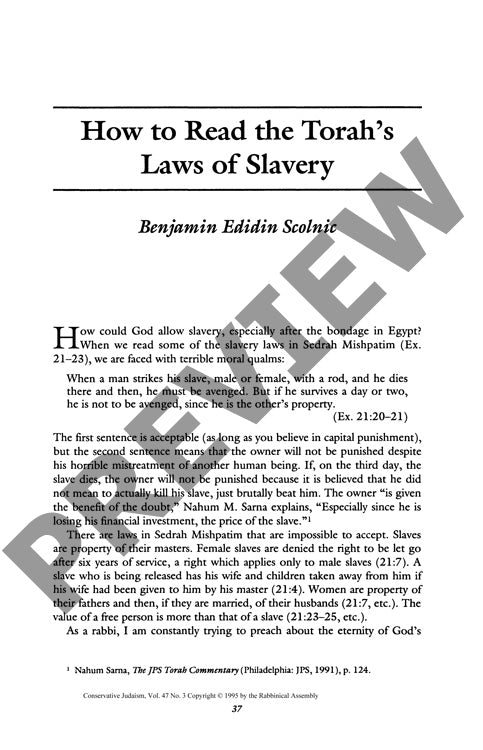How to Read the Torahs Law of Slavery
Couldn't load pickup availability
The Torah's seemingly contradictory laws on slavery - simultaneously humane and harsh - reveal a sophisticated theological strategy rather than mere inconsistency. Through legal-historical analysis of Sedrah Mishpatim (Exodus 21-23), two distinct forms of biblical law emerge: casuistic (case law) borrowed from ancient Near Eastern codes like Hammurabi, and apodictic (imperative) law unique to the Israelites. Comparative textual analysis between Exodus and Deuteronomy demonstrates how the Israelites' experience as enslaved people in Egypt transformed their inherited legal frameworks. This evolution appears clearly in Deuteronomy's enhanced protections for female slaves and requirements for compensation upon manumission. The apodictic principle "you were strangers in Egypt" gradually reshaped older casuistic traditions, embedding absolute moral principles within contemporary legal structures. Rather than representing contradiction, this legal tension reflects intentional divine pedagogy - a dynamic process preventing legal stagnation while promoting ethical development. Such findings suggest that halakhah emerges from the intersection of divine will and historical circumstance, challenging static interpretations of biblical law while preserving theological authority through progressive revelation.

More Information
-
Physical Description
-
Publication Information
Published 1995
ISBN
-
Publication Credits
Benjamin Scolnic

